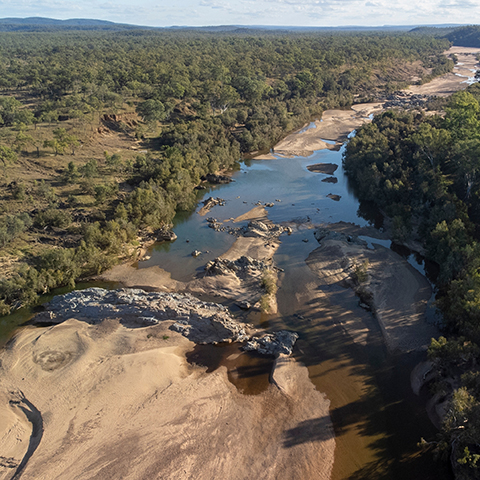
This project was funded by the Australian Government ($1.15 million). Australian Government funding was provided through the National Water Grid Fund.

North Queensland's Burdekin River, the Bradfield Scheme's centrepiece.
Project overview
In 1938, engineer Dr John Bradfield proposed a scheme to move water. His scheme would move water south and inland, from northern Queensland coastal catchments. If successful, the scheme would provide water for inland agricultural development.
Variations of the original Bradfield Scheme recommended diverting water from north Queensland to:
- improve drought resilience
- provide a secure water supply to western Queensland or to the Murray–Darling Basin.
The National Water Grid Science Program funded CSIRO to examine the Bradfield Scheme. A range of current science, data and technology was used to analyse the scheme.
The analysis looked at:
- The original scheme proposal to move water from the Tully, Herbert and Burdekin catchments to a dam at Hells Gates. Then inland to Kati Thanda-Lake Eyre.
- The scheme’s modern variations also capture water in a dam at Hells Gates. Then to supply regions in western Queensland and to the Murray-Darling Basin.
What the assessment found
The CSIRO used positive ideas with modern science and technology to increase efficiency. But they found the cost to divert water uneconomic and would result in very high water-costs to farmers.
Moving water was technically possible. But the cost of building and maintaining the infrastructure was unrecoverable.
Also, the largest quantity of water of possible water diversion was less than half of what Dr Bradfield first proposed.
The study found diverting water inland adds cost without visible benefit. It showed water moving to areas where it is less efficient and at a higher cost.
CSIRO found using water closer to where it falls could meet the water supply and security goals of Bradfield-style schemes. There was also less risk, lower cost and fewer ecological impacts.
Dr Bradfield achieved a great deal during his career. All without access to modern technology. His work is respected and celebrated today.
Key project benefits
Learn more
- Discover our Science Program.
- Find out more about this project, including a summary report and fact sheets, at CSIRO’s Bradfield Scheme Assessment project page.

